What Anti-Counterfeiting methods are applied?
Digital watermarks, hashing, and fingerprinting are three automatic object appreciation technologies that could be used to protect digital media from Anti Counterfeiting.
Anti Counterfeit packaging technologies
Packaging is also defined as a coordinated system for enclosing or protecting brands for allocation, storage, survival, shipping, information, and sales. Because of their strong competitive position, ease of production, and higher profit margins, pharmaceutical brands are the most vulnerable.
Packaging is a network that links production and marketing, ensuring that goods reach consumers in safe and secure conditions at the lowest possible cost. Anti Counterfeit packing technologies are a product security issue.
Anti Counterfeit Packaging Market
The adoption of advancements for product tracking would reduce economic damage while also increasing the market adoption of anti-counterfeit packaging. Favorable regulatory policies throughout the food and drug packaging support anti-counterfeit technologies, which is the main reason in this market.

Types of Counterfeit Detection
There are three kinds of counterfeit detection choices available, and integrating them into products and labels adds protection and defends against counterfeiters.
Overt: A visible and readable human. Holographic, foils, and color-shifting inks are prominently displayed to buyers to verify authenticity.
Covert: Machine visible and understandable when it is hidden. Hidden security measures require the use of a device or tool to read, such as a UV light, detector, or smartphone.
Forensic: Machine-readable and visible. This is a high level of security that is validated by specialized lab equipment.
The level required will be determined by the nature of security required by a brand for a specific market and may include layers of protection.
